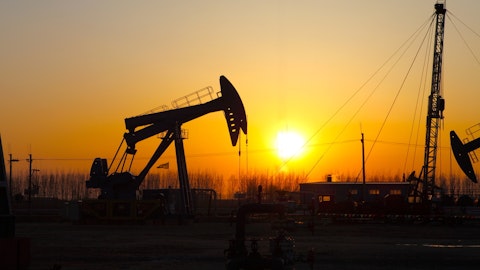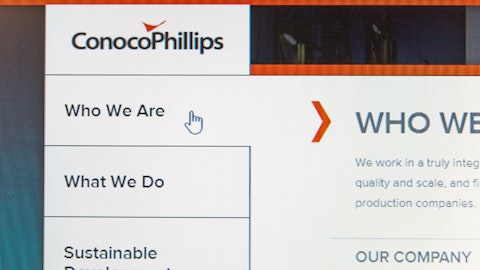When a company is burning through cash, it will not be able to survive longer term unless it either (1) has a boatload of cash reserves on the balance sheet; (2) improves its profitability or capital efficiency; (3) issues equity; (4) issues debt; and/or (5) sells off assets, which only goes so far.
In the case of COP, its cash on hand ($2.4 billion) isn’t enough to even cover the amount of dividends it paid out and is hardly above the $1.9 billion free cash flow loss the company reported.
Profitability improvements also appear unlikely because COP’s margin is mostly impacted by the price of oil. The company is slashing its spending and working hard to reduce its production costs, but the 70% drop in oil prices is hard to offset, especially depending on the quality of a company’s oil reserves and the regulatory environment it operates in. Furthermore, COP is more impacted by lower oil prices because it has no downstream operations after it separated from Phillips 66 (PSX). Downstream businesses are performing very well in this environment and providing a bit of a cash flow hedge for integrated producers such as ExxonMobil (XOM).
With little cash on hand and operating cash flow unable to even cover capital expenditures, much less the dividend, COP needed to sell off non-core assets and tap debt markets to keep the game going.
COP did issue $2.5 billion in debt through the first nine months of 2015, but its balance sheet was reaching increasingly dangerous levels. As seen below, COP had nearly $25 billion in debt compared to $2.4 billion in cash. In 2014, the company only managed to generate $1.25 billion in free cash flow, or about $1 for every $3 in dividends it paid out that year.

Source: Simply Safe Dividends
At some point, banks become less willing to lend to distressed businesses, especially on favorable terms. However, companies will always make interest expense and debt principal payments before paying a dividend.
In ConocoPhillips (NYSE:COP)’s case, we can see that reducing the dividend would free up several billion dollars in cash flow each year, which the company could desperately use during this period of distressed oil prices. Poor cash management, weak cash flow generation, excessive leverage, and dependence on unpredictable commodity prices ultimately drove COP’s dividend cut.
Despite the turmoil impacting energy markets, we actually own two oil companies in our Conservative Retirees dividend portfolio. Unlike COP, however, each of these businesses generated positive free cash flow in 2015 (even excluding asset sales) and have much better production cost profiles and diversification.
While practically no oil company’s dividend will be safe if $30 oil prices persist for the next five years, we expect these two producers to be some of the last ones standing if it comes down to that (we don’t expect it will).
For investors seeking safe dividend stocks, reviewing some of our favorite blue chip dividend stocks and the lists of dividend aristocrats and dividend kings are good places to start. And remember – high yields are more often than not high for a reason, especially with cyclical, indebted commodity stocks.
Disclosure: None





